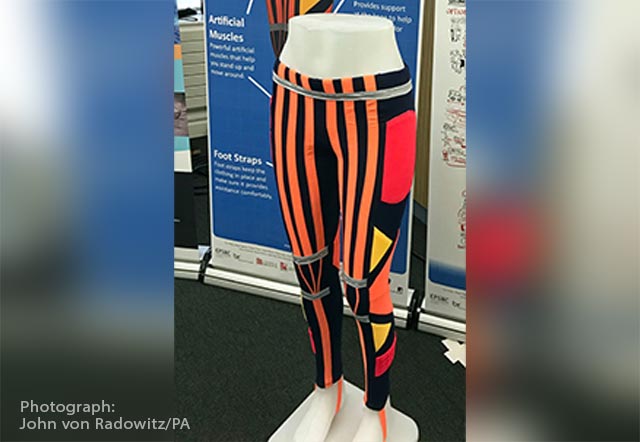
According to the researchers, they wanted to develop artificial muscles, which, instead of using traditional actuators powered by electricity, use actuators that more closely mimic natural biological processes.
“Although artificial muscles have been demonstrated for many years now, using different physical principles to drive the actuators, this is the first time such actuators are driven directly from glucose and oxygen, making them much more similar to mammalian muscles,” Edwin Jager, a senior lecturer in Sensor and Actuator Systems at Linköping, said in an interview with Digital Trends.
According to Jager, they developed the artificial muscles by sandwiching a thin membrane between two layers of an electroactive polymer called polypyrrole.
As described in the study, which has since been published in the journal Advanced Materials, when the material on one side of the membrane acquires a positive electrical charge, it expels ions, causing it to shrink. At the same time, the material on the other side picks up a negative electrical charge and gains ions, causing it to expand. This causes the actuator to bend, similar to the way that biological muscles contract. (Related: Updating fluid-powered machines: Scientists design bizarre-looking lionfish powered by a blood-like compound.)
As per the researchers, while the charge needed to power the “muscles” is usually sourced from a battery, it can also be derived from glucose and oxygen — just like the process involved in living cells. They attempted to replicate this process by integrating enzymes into the electroactive polymer. These enzymes, the researchers hypothesized, would then burn the glucose for energy the same as a muscle does.
They were correct.
"These enzymes convert glucose and oxygen, in the same way as in the body, to produce the electrons required to power motion in an artificial muscle made from an electroactive polymer," Jager said, adding that their newly developed “muscle” did not need any batteries.
“It's enough simply to immerse the actuator into a solution of glucose in water,” Jager noted.
Jose Martinez, a member of the research group, described their breakthrough as “amazing.”
"When we had fully integrated enzymes on both sides of the actuator and it actually moved—well, it was just amazing," Martinez said.
The researchers’ next step involves finding ways to control the biological reaction of the enzymes, as well as to check if the process can be maintained through many repeat cycles, given that their goal is to eventually mimic a living muscle.
Furthermore, the researchers want to test the concept using other actuators as the "textile muscle," as well as apply the newly developed technology to the realm of microrobotics.
According to Jager, their artificial muscles could be used to develop medical soft microrobots that can help minimize the need for invasive surgeries; as well as the creation of autonomous, self-propelled microrobots that can be used for more efficient environmental monitoring in bodies of water.
For the latter application, however, Jager said they would have to develop additional technologies for it to be rendered feasible, such as switching out the glucose-burning enzymes for others that are more suited for other biofuels that may be present in other environments.
"Glucose is available in all organs of the body, and it's a useful substance to start with. But it is possible to switch to other enzymes, which would enable the actuator to be used in, for example, autonomous microrobots for environmental monitoring in lakes. The advances we present here make it possible to power actuators with energy from substances in their natural surroundings," Jager explained.
Visit Biotech.news to learn more about the potential applications for artificial muscles.
Sources include:
Please contact us for more information.























